The following produce items are organized alphabetically, not in one straight linear list, but rather within each different section of the parts of the plant. In general, you will notice that if you know what part of the plant an item comes from, you can prepare almost all produce from that part of the plant in a similar way, even if you’re not completely sure what to do with a more unfamiliar item. Please keep that in mind when you’re challenged with an item that you can’t identify. For example, if it’s a root, then you can steam, sauté, boil, roast, grill, or grate it raw. You don’t need to even know its name. Just identify that it looks like it might have come from the ground, and you can prepare it. Also, keep in mind that this is a general list, and you may find disputing information on any of these items, so please just use it as a guide until you gain more experience.
Roots of the plant
Beets
Appearance: Deep reddish-purple or golden roots and also some with candy-striped flesh attached to deep green leaves with purple or green stems and veins
Taste: Root is earthy and sweet, greens are sweet when young becoming sharper with age
Nutrition: Roots are rich in folate, manganese, and potassium. The greens are rich in beta carotene, calcium, and iron.
Uses: Greens can be used as a salad green or cooking green. Roots can be steamed, boiled, roasted in the oven or grilled. Uncooked roots can be grated or sliced raw for use in salads.
Storage: Remove greens from the beets or the root will become soft. Soak leaves in water, spin or pat dry and store in a bag or container in refrigerator. Roots can be stored in a bag in the refrigerator, unwashed. Roots store for months.
Season: Early spring until the ground freezes in the fall.
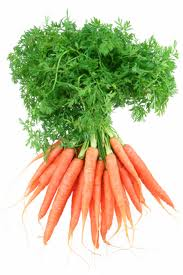 Carrots
Carrots
Appearance: Commonly orange roots in color, but can be yellow, purple or white; deep green feathery tops
Taste: Fresh, crisp carrot flavor, sweeter in the fall after a hard frost.
Nutrition: Rich in Vitamin A, dietary fiber, vitamin C, vitamin K, folate and manganese
Uses: Raw, steamed lightly, stir fried.
Storage: Remove tops immediately and store slightly moist roots in bag or container.
Season: Early spring and summer, late fall.
Extra: Newly dug, farm-fresh carrots are very fragrant!
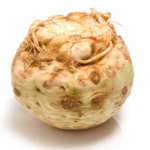 Celeriac (Celery Root)
Celeriac (Celery Root)
Appearance: Rather ugly, knobby, brown vegetable skin with white flesh when peeled; can be as small as an apple or as big as cantaloupe
Taste: Taste like a cross between strong celery and parsley
Nutrition: Contains a fair source of Vitamin K & C, phosphorus,
Uses: Can be eaten raw in slaws or salads or cooked in soups, stews, purees; can also be baked, boiled, or sautéed; after peeling should be soaked in lemon juice to prevent discoloration of the flesh
Storage: Remove tops and refrigerate in plastic bag for up to 3 months; may also be dried and used as a seasoning.
Season: Fall
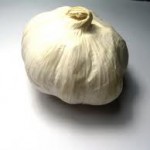 Garlic
Garlic
Appearance: Tight white with purplish tinge bulbs covered in papery skins
Taste: Pungent or spicy when raw, roasted or cooked becomes sweet and mild
Nutrition: Rich in Manganese, Vitamin C, and Vitamin B6.
Uses: Raw, steamed lightly, stir fried, roasted, seasoning in many dishes
Storage: Store fresh garlic in either an uncovered or a loosely covered container in a cool, dark place away from exposure to heat and sunlight.
Season: Mid-summer. Stores for several months.
Extra: Technically not the root of the plant (although the bulb is harvested underground), but a specialized growth bud
 Onions (large bulb, sweet, and storage type)
Onions (large bulb, sweet, and storage type)
Appearance: Papery light brown skin covering white, yellow or red flesh onion
Taste: Mild to stronger flavor depending on growing conditions. Hot, dry weather produces a more pungent flavor.
Nutrition: Rich in Vitamin C and chromium
Uses: Great for salads, soups, sandwiches, slices, onion rings, roasted and grilled. The storage type can be kept for months and used in winter soups, stews, slow-cooker recipes.
Storage: Store storage type onions in a cool moderately dry place with good air circulation. They do not have to be refrigerated. Do not store near potatoes or apples.
Season: Summer, fall, winter
 Parsnips
Parsnips
Appearance: Long, cylindrical, creamy-white roots
Taste: Sweet flavor, similar to carrots
Nutrition: Excellent source of vitamin C, fiber, folic acid, pantothenic acid, copper, and manganese
Uses: Can be baked, boiled, sautéed, steamed. Our favorite way to prepare them is to roast with olive oil and fresh herbs.
Storage: Refrigerate in plastic bag or damp cloth for up to 2 weeks
Season: Fall
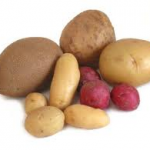 Potatoes
Potatoes
Appearance: Tubers range in color from red to brown to yellow to purple.
Taste: Rich, early flavor with flesh textures ranging from flaky, dry white to creamy yellow or blue
Nutrition: Rich in Vitamins C, B6.
Uses: Grilled, baked, fried, mashed, salads, stews, soups
Storage: Store in a dark, dry place ideally between 45-50 degrees. Refrigeration is not recommended. Do not store near onions or apples.
Season: Late summer, fall
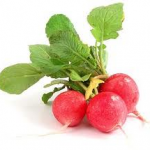 Radishes
Radishes
Appearance: Bright red, purple, pink, white roots with bright green tops. Flesh typically white and very crunchy
Taste: Sometimes pungent with mild to peppery flavor. Pungency depends on growing conditions. Dry, hot weather produces a hotter radish.
Nutrition: Roots rich in Vitamins A & C; greens are an excellent source of vitamins A, B, and C and a good source of riboflavin, calcium and iron.
Uses: Can be eaten raw and sliced or grated into salads and sandwiches, and also roasted, stir-fried, or put into soups; leaves can be steamed, sautéed, or used in soups.
Storage: Remove tops from roots and store separately in refrigerator.
Season: Cool season crop harvested in May & June.
Extra: Try radishes in a number of different ways including adding them to stir fries, potato salad or cole slaw, sliced on sandwiches or a hamburger. Greens are also edible and can be used in salads or stir fries
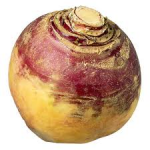 Rutabaga
Rutabaga
Appearance: Purplish skin with yellow flesh; thought to be a cross between a cabbage and a turnip and resembles a large turnip (3 to 5 inches in diameter)
Taste: Slightly bitter with a sweet earthiness; tastes like a cross between a cabbage and a turnip
Nutrition: Very good source of Manganese, Potassium and Vitamin C, and good source of Calcium, Phosphorus, Magnesium, Dietary Fiber, Thiamin, and Vitamin B6
Uses: Bake, steam, or boil so it cooks up to a creamy texture as nice addition to mashed potatoes, can be substituted or added to pumpkin or squash pies, or baked in a root bake, and often a key ingredient in making pasties.
Storage: Refrigerate in a plastic bag for up to 1 month; keeps at room temperature for 1 week; long term storage for several months in hydrator drawer
Season: Fall
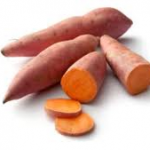 Sweet Potatoes
Sweet Potatoes
Appearance: Tubers vary in size and shape. Skin is light brown to deep orange depending on variety; can also be white.
Taste: Creamy, sweet, earthy flavor.
Nutrition: Rich in Vitamins A & C.
Uses: Baked like squash, in soups, stews, or wherever canned pumpkin is needed. Best if oven (not microwave) baked.
Storage: Store in a dark, dry place ideally between 45-50 degrees. Refrigeration is not recommended.
Season: Late summer.
Extra: Sweet potatoes are best if slow roasted in the oven. This intensifies the earthy sweet flavor of the tubers. Often mistakenly called “yams”!
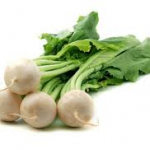 Turnips
Turnips
Appearance: Can be all white, white with purple tops, yellow, or red roots with bright green tops. Roots can range in size from baby to quite large.
Taste: Roots have a flavor similar to cabbage as they are in the same plant family (Brassica). The greens are very tasty as well, and very nutritious.
Nutrition: Fair source of vitamin C in root; greens are an excellent source of vitamins A and C and a good source of riboflavin, calcium and iron
Uses: Roots can boiled or steamed, then mashed or pureed; also can be stir-fried, cubed and tossed with butter, or used raw in salads. Turnip greens may be cooked by boiling, sautéing, steaming and stir-frying.
Storage: Remove greens from roots. Soak leaves in water, spin or pat dry and store in a bag or container in refrigerator. Roots can be stored in a bag in the refrigerator for a month or more, unwashed.
Season: Summer, fall.
Stems of the plant
 Asparagus
Asparagus
Appearance: Stems can be green, purple, or white variety (if kept under mulch or underground to prevent the green color and makes it more delicate).
Taste: Strong flavor, unique to asparagus
Nutrition: Contains a good amount of vitamin A and is a fair source of iron and vitamins B and C, rich in potassium and zinc; good source of folic acid, dietary fiber, and rutin
Uses: Serve raw chopped in salads or with dips; delicious steamed, roasted, sautéed, or grilled.
Storage: Wrap in damp cloth and plastic bag and refrigerate or bundle spears with rubber band and place upright in container with inch of water.
Season: Spring, early summer
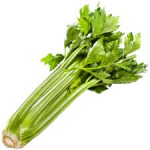 Celery
Celery
Appearance: Tall, crisp, glossy green stalks and leaves. Organic celery is often a darker green, if not blanched.
Taste: Organic celery is typically not blanched by hilling soil around the plant to exclude light, so it has a much stronger celery flavor than typically found in the stores. Blanching can make paler, juicier, milder-flavored stalks, but unblanched is excellent for cooking with a more intense celery flavor.
Nutrition: 94% water, but contains vitamins A, C, B-complex, and E, and is high in fiber
Uses: Commonly added to salads, casseroles, soups, stews, and stir-fries.
Storage: Refrigerate in damp towel and will last up to 2 weeks; for crispy celery store upright in jar of 1-inch water.
Season: Late summer, fall
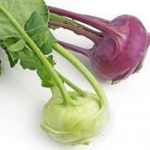 Kohlrabi
Kohlrabi
Appearance: Bulb-like stem can be green, white or purple with edible, long stemmed, deep green leaves
Taste: Another member of the Brassica family. This bulbous stem has a flavor similar to cabbage and mild, sweet, turnips. Leaves also have a cabbage like flavor and can be cooked.
Nutrition: Bulbs are rich in potassium and vitamin C, and leaves are good sources vitamins A and C, calcium, potassium, and fiber
Uses: Both greens and bulb are edible. Bulb can be peeled, any woody sections removed, grated, diced or julienned sliced and used in stir fries or eaten raw. Greens can be eaten fresh, steamed, or stir fried.
Storage: Remove greens from stem and store each separately in the refrigerator.
Season: Early summer, fall.
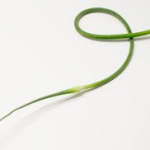 Garlic Scapes
Garlic Scapes
Appearance: Slender green stems with a slight bulge at the bottom; resemble chives, except for the bulge and often curled.
Taste: Mild garlic flavor
Nutrition: Probably similar to garlic bulbs’ nutritional benefits
Uses: Chopped in salads, roasted, grilled, and sautéed.
Storage: Put in refrigerator in plastic bag for up to 2 weeks
Season: Summer
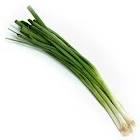 Green Onions
Green Onions
Appearance: Green tops and white, yellow or red bulbs. Vary in size from pencil thin to larger bulbs
Taste: Mild to stronger flavor depending on growing conditions. Hot, dry weather produces a more pungent flavor.
Nutrition: Rich in Vitamin C and chromium
Uses: Chopped stems and bulb can be used in place of the larger bulb onions for a quick burst of flavor, especially if stems are used also. Add to any Mexican dish like quesadillas, tacos, burritos. Use in salads, stir fries, or grill the entire onion for a delicious grilled vegetable.
Storage: Store slightly moist onions in a bag or container in refrigerator
Season: Early spring, summer, fall, winter
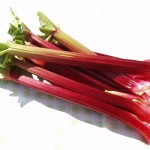 Rhubarb
Rhubarb
Appearance: related to a common weed, the dock plant; it is botanically a vegetable, although generally we think of it as a fruit; pinkish-green stalks
Taste: Acidic, sour, or tart flavor
Nutrition: High in vitamins A and C and some minerals, such as calcium
Uses: dice young tart stalks into salads or hot /cold cereal, add slices to spring soups, juice it, make a sauce, pie, crisp, or tart.
Storage: wrap in damp towel or plastic bag in the refrigerator for up to a week. For long-term storage, rhubarb may be frozen as a sauce or after it is washed, chopped, and drained, put in a bag.
Season: Spring
Leaves of the plant
 Arugula
Arugula
Appearance: Green, elongated, lobed leaf
Taste: Unique, nutty, sometimes pungent or sharp flavor
Nutrition: Rich in Vitamins A, C, K; Folate, Calcium, Potassium and Manganese
Uses: Mainly as a salad green but it can be used in place of parsley or basil on bruchetta and in pesto, or sprinkled on soups, pizza, pasta salad, garlic bread.
Storage: Immerse leaves in cold water, drain and spin or pat dry. Store slightly moist leaves in bag or container. Very perishable, so use within 5 days.
Season: Prefers cooler weather but will easily grow even in warm weather
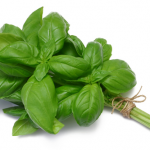 Basil
Basil
Appearance: Medium green, fragrant leaves, but can also be purple variety
Taste: Aromatic, sweet flavored herb with variations of flavors ranging from anise, lemon, peppery, mint
Nutrition: Good source of Vitamin A
Uses: Basil is an herb best used fresh. Use it to make pesto, chopped fresh on salads, pizza, pasta dishes warm and cold, any tomato dish
Storage: Stores longer outside of the refrigerator in a jar of water; can last for up to 2 weeks if root is attached; can be easily dried by hanging a bunch upside down
Season: Summer, and early fall before frost. Very sensitive to cold
 Bok Choy
Bok Choy
Appearance: Creamy white to pale green stems ending in deep green rounded leaves.
Taste: Crunchy mild stems and green leaves with a sweet, mild flavor
Nutrition: Rich in Vitamins A, C, and calcium
Uses: Two vegetables in one—the leaves can be cooked like spinach, and the crisp stem can be eaten like celery or asparagus; excellent in stir-fries, soups, sautéed, eaten raw, or wilted slightly on the grill.
Storage: Store slightly moist heads in bag or container in refrigerator.
Season: Early spring and summer, late fall.
 Cabbage
Cabbage
Appearance: Light to dark green heads, heavy for their size
Taste: Another Brassica family vegetable, spring harvested cabbage is sometimes sweet
Nutrition: Rich in Vitamin C and fiber.
Uses: Raw, steamed lightly, stir fried, roasted on the grill, in salads.
Storage: Store heads in bag or container in refrigerator. Can store for a few weeks without spoiling.
Season: Early spring and summer, late fall.
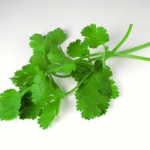 Cilantro (Coriander)
Cilantro (Coriander)
Appearance: Many dark green somewhat round to feathery leaves on green stems. Seeds are harvested as coriander but we only harvest the fresh leaves.
Taste: Unique, pungent fresh flavor that is a must for fresh salsa. Use leaves and stems if stems are not woody.
Nutrition: Good source of thiamin, zinc, and anti-oxidants
Uses: Add chopped cilantro to fresh cilantro, guacamole, tacos, quesadillas, added to marinades. Unique flavor is important in Mexican and Thai cooking
Storage: Store slightly moist leaves in bag or container in refrigerator; not easily dried, but can be chopped and put into freezer bags
Season: Early spring, summer, and fall.
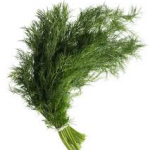 Dill
Dill
Appearance: Feathery fern leaves or yellow flower umbels
Taste: Wonderful sweet fragrant flavor
Nutrition: Good source of Vitamin A, manganese, potassium, and iron
Uses: Chopped dill leaves are wonderful in salad dressings, dips, sprinkled on a sandwich, added to homemade savory breads, as an addition to marinades, in cold summer salads especially containing cucumbers.
Storage: Store in bag or in jar of water in refrigerator; can be easily dried by hanging a bunch upside down and stored in glass jar
Season: Early spring, summer, and fall.
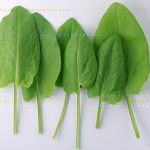 French Sorrel
French Sorrel
Appearance: Smooth, light green leaf wide at the base ending in a sharp point at the tip
Taste: Surprisingly sour citrus flavor
Nutrition: Rich in magnesium, potassium, and Vitamin C.
Uses: Raw in salads, sautéed or wilted; delicious in soups
Storage: Store slightly moist leaves in bag or container in refrigerator. Very perishable, so use within 5 days.
Season: Early spring, summer, and fall.
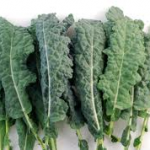
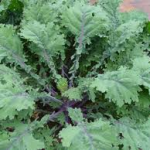
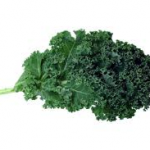 Kale (Lacinato, Red Russian, or Curly)
Kale (Lacinato, Red Russian, or Curly)
Appearance: depending on variety, chalky green or grey green leaves, and red curly in fall
Taste: From Brassica family with a taste similar to cabbage or broccoli
Nutrition: rich in Vitamin A, C, folic acid, fiber, calcium and iron; highest in protein of cultivated vegetables
Uses: Raw in salads, sautéed or wilted, excellent chopped and added to soups
Storage: Store slightly moist leaves in bag or container in refrigerator. Can be kept successfully 7+ days.
Season: Early spring, summer, and fall.
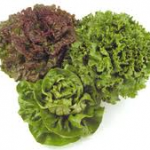 Leaf Lettuce
Leaf Lettuce
Appearance: Red or green leaves that are most often savoyed
Taste: Mild to stronger flavor depending on growing conditions. Dry weather produces a more bitter leaf.
Nutrition: Rich in Vitamin A
Uses: Salads, garnish, use as ‘tortilla’ to wrap up a fresh chicken or tuna salad.
Storage: Store slightly moist leaves in bag or container in refrigerator
Season: Early spring, summer, fall, winter
Extra: Leaf lettuce does not form a head. The leaves can be harvested and new ones will grow to replace them.
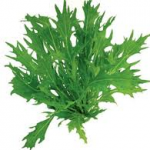 Mizuna
Mizuna
Appearance: very serrated light green leaves with very thin white stems
Taste: Brassica family green with a taste like mild mustard greens
Nutrition: Rich in Vitamin C, iron and folate
Uses: Raw in salads, sautéed or wilted
Storage: Store slightly moist leaves in bag or container in refrigerator
Season: Early spring, summer, and fall (sometimes even into the winter in hoop houses).
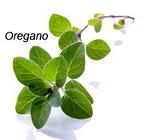 Oregano, Greek
Oregano, Greek
Appearance: Grayish-green leaves on woody stems
Taste: Intense, warm, woodsy flavor and aroma
Nutrition: Good source of dietary fiber
Uses: Chopped and added to pizza, pasta sauce, roasted meat dishes, salad dressing, eggs
Storage: Store in bag or in jar of water in refrigerator; can be easily dried by hanging a bunch upside down and stored in glass jar
Season: Early spring, summer, and fall.
Extra: Dries easily for later use
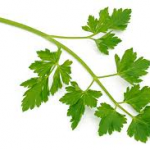 Parsley
Parsley
Appearance: Deep green stems and with serrated deep green leaves
Taste: Strong fresh green flavor
Nutrition: Rich in Vitamin K, C, and A
Uses: Chopped parsley goes well in soups, fresh salads, sauces, pesto. Or just munch on a few sprigs at dinner time.
Storage: Store slightly moist leaves in bag or container in refrigerator; can be chopped and frozen in bags
Season: Early spring, summer, and fall.
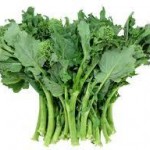 Rapini (also called Broccoli Raab/Rape/Rabe)
Rapini (also called Broccoli Raab/Rape/Rabe)
Appearance: Traditional Italian specialty leafy green with 6 to 9 inch stalks and scattered clusters of tiny broccoli-like buds
Taste: Tastes like a combination of mustard greens and broccoli with a pungent, nutty flavor
Nutrition: Good source of vitamins A, C, and K, potassium, folic acid, fiber and flavonoids
Uses: Used for salads or light cooking such as steaming and stir-fries.
Storage: Wrap in dampened cloth in plastic bag for up to 1 week.
Season: Summer
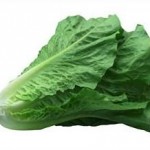 Romaine Lettuce
Romaine Lettuce
Appearance: Green, red or ‘freckled’ leaves
Taste: Mild to stronger flavor depending on growing conditions. Dry weather produces a more bitter leaf.
Nutrition: Rich in Vitamins A, C, Folate, and dietary fiber
Uses: Salads
Storage: Store slightly moist leaves in bag or container in refrigerator
Season: Early spring, summer, and fall.
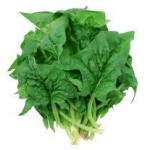 Spinach
Spinach
Appearance: smooth or savoyed (wrinkly) deep green leaves
Taste: fresh green flavor, over-wintered spinach can be quite sweet.
Nutrition: rich in Vitamins A, K and folate
Uses: Raw in salads, steamed, sautéed or wilted
Storage: Store slightly moist leaves in bag or container in refrigerator
Season: Early spring, summer, and fall.
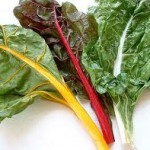 Swiss Chard
Swiss Chard
Appearance: smooth to slightly savoyed leaves with white, yellow, or red stems and veins
Taste: tastes green, similar to spinach
Nutrition: rich Vitamins A, K, C.
Uses: Raw in salads or sandwiches, sautéed or wilted. Excellent coarsely chopped and added to soups.
Storage: Store slightly moist leaves in bag or container in refrigerator
Season: Early spring, summer, and fall.
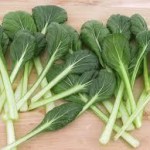 Tatsoi (or Yukina Savoy–slightly larger leaves than tatsoi)
Tatsoi (or Yukina Savoy–slightly larger leaves than tatsoi)
Appearance: deep green round leaves on white wide stems, similar in appearance to Bok Choy.
Taste: Mild flavor similar to Bok Choy and other brassicas
Nutrition: N/A
Uses: Raw in salads, sautéed or wilted
Storage: Store slightly moist leaves in bag or container in refrigerator
Season: Early spring, summer, and fall.
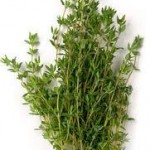 Thyme
Thyme
Appearance: Tiny fragrant green leaves on woody stems
Taste: Strong, woodsy flavor and fragrance
Nutrition: Rich in iron, manganese, and Vitamin K
Uses: Good in homemade chicken stock. Use in marinades, rubs, breads, salads, bean recipes, roasted chicken.
Storage: Store in bag or in jar of water in refrigerator; can be easily dried by hanging a bunch upside down and stored in glass jar
Season: Early spring, summer, and fall.
Extra: Dries easily for later use.
Flowers (or buds) of the plant
 Broccoli
Broccoli
Appearance: Deep green main flower heads or smaller side shoots once main head is harvested.
Taste: From the Brassica family and has a very similar taste to cabbage
Nutrition: Rich in Vitamin C, Vitamin A, Folate, and fiber.
Uses: Raw, steamed lightly, stir fried, roasted on the grill.
Storage: Store slightly moist heads in bag or container in refrigerator.
Season: Early spring and summer, late fall.
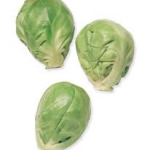 Brussels Sprouts
Brussels Sprouts
Appearance: tiny, green cabbage heads with mildly pungent, mustard-like flavor.
Taste: From the Brassica family and has a very similar taste to cabbage
Nutrition: high in Vitamin K and C; rich in protein, dietary fiber, minerals, and antioxidants
Uses: Raw, steamed lightly, stir fried, roasted.
Storage: Store slightly moist heads in bag or container in refrigerator.
Season: Fall
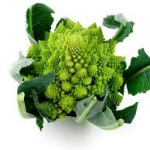
 Cauliflower
Cauliflower
Appearance: Green fractal head (Romanesco) to creamy, off-white flower heads wrapped in pale green leaves
Taste: Brassica family vegetable with a taste similar to cabbage
Nutrition: Rich Vitamin C, Folate, and fiber.
Uses: Raw, steamed lightly, stir fried, grilled
Storage: Store slightly moist heads in bag or container in refrigerator.
Season: Early spring and summer, late fall.
Fruits of the plant
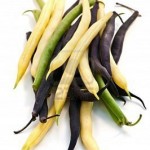 Beans (String Beans)
Beans (String Beans)
Appearance: Long, slender, green, yellow, or purple pods
Taste: Crunchy and sweet when eaten raw, fresh and green when steamed lightly
Nutrition: Excellent source of vitamin C, K, A, manganese.
Uses: Enjoy washed raw beans as a crunchy snack – the flavor is sweet and fresh. Lightly steamed green beans can be a salad topper or vegetable side. Excellent steamed and tossed with olive oil, balsamic vinegar, and fresh ground pepper.
Storage: Wash, pat dry, and store in bag or container in refrigerator. Make sure beans are not too moist as this will cause beans to spoil.
Season: Warm weather crop, must be grown during frost free period from mid-May through early October.
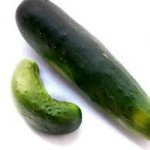 Cucumbers
Cucumbers
Appearance: Deep to sometimes lighter green fruits, firm, heavy for size
Taste: Fresh, crisp, sweet cucumber flavor. Farm fresh flavor greatly exceeds store bought.
Nutrition: Mostly water but contains Vitamin C and skin is rich in fiber.
Uses: Raw, salads, pickled; can also be julienned, sautéed, or baked.
Storage: Store in bag or container in refrigerator
Season: Summer and fall before frost. Not frost tolerant.
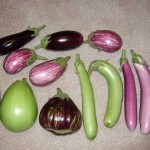 Eggplant
Eggplant
Appearance: Smooth, shiny skin ranging in color from white to lighter purple/white fruits to almost black, spongy texture inside
Taste: Mild, absorbs flavor of sauces
Nutrition: Rich in fiber and potassium
Uses: Roasted, grilled, baked, stir fried, added to soups, used in appetizers
Storage: Store eggplant in bag in warmest part of refrigerator. Can be stored unrefrigerated if kept around 50 degrees.
Season: Harvested in mid-summer.
Extra: Once cut, eggplant flesh will begin to darken with exposure to air. A saltwater bath or a brushing of lemon juice will keep the flesh light.
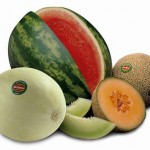 Melons (Honeydews, Watermelons, Cantaloupes, Muskmelons)
Melons (Honeydews, Watermelons, Cantaloupes, Muskmelons)
Appearance: Many different colors and sizes, but usually round or oval.
Taste: Sweet, juicy flavor
Nutrition: Mostly water but contains Vitamin C and other vitamins and minerals.
Uses: Slice, dice and serve as drinks, salads, or salsa.
Storage: If melon seems not quite ripe, store at room temperature until sweet smell is coming from the soft, stem end; then store in the refrigerator
Season: Summer
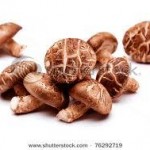 Mushrooms (Shiitake & Oyster)
Mushrooms (Shiitake & Oyster)
Appearance: Shiitakes have a flower-like cracking pattern on brown cap. Oysters have white, golden, or gray oyster-shaped cap
Taste: Mild, earthy odor and meaty texture
Nutrition: Good source of B vitamins; high levels of protein and potassium, niacin, calcium, magnesium and phosphorus
Uses: Brush off dirt to clean or wipe with damp cloth, do not wash or submerge in water; good grilled, sautéed, steamed, in soups, gravies, stews, and in sandwiches.
Storage: Place in paper bag or wax bag and keep in refrigerator for up to 5 to 7 days.
Season: Spring, summer, fall
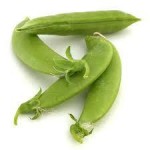 Peas, Sugar Snap & Snow
Peas, Sugar Snap & Snow
Appearance: Snap peas are bright green round pods with peas that crunch when eaten. Snow peas are flat, crispy pods with immature peas in them also.
Taste: Sweet juicy ‘pea’ flavor
Nutrition: Rich in Vitamins A, C, dietary fiber, and protein.
Uses: Excellent eaten raw, steamed lightly, stir fried
Storage: Store slightly moist pods in bag in refrigerator
Season: Early summer
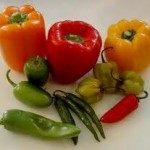 Peppers, Bell & Chile
Peppers, Bell & Chile
Appearance: Range in color from green, red, purple, brown, or orange. Chiles (sweet or hot) are elongated in shape, varying in length.
Taste: can be sweeter when allowed to ripen to brighter colors like red and orange. Chiles can range from sweet to pungent to spicy.
Nutrition: Rich in Vitamins C
Uses: Excellent eaten raw, stir fried, grilled, sautéed with olive oil
Storage: Store in bag in refrigerator
Season: Late summer, fall until frost
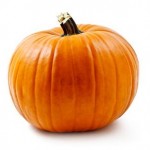 Pumpkin, Pie type
Pumpkin, Pie type
Appearance: Bright orange skin with matching firm orange flesh
Taste: Flesh very similar to squash in flavor and texture
Nutrition: Rich in Vitamins A & C.
Uses: Baked like squash, in soups, stews, or wherever canned pumpkin is needed.
Storage: Store in a dark, dry place ideally between 45-50 degrees.
Season: Late summer, fall
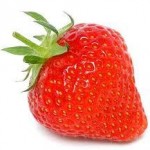 Strawberries
Strawberries
Appearance: Red, conical fruit with tiny white flowers
Taste: Sweet
Nutrition: Excellent source of vitamin C and flavonoids
Uses: Can be eaten fresh, frozen, dried, made into preserves, pies or other desserts. Strawberries are a popular addition to dairy products, as in strawberry flavored ice cream, milkshakes, smoothies and yogurts.
Storage: Store on a paper towel in a tightly-covered container in the refrigerator for 2 to 3 days.
Season: “June-bearing” strawberries are in early summer, and “Ever-bearing” strawberries are throughout the season.
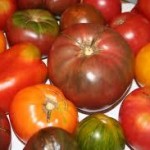 Tomatoes
Tomatoes
Appearance: Range in size and shape depending on variety.
Taste: Sweet, juicy, acidic.
Nutrition: Rich in Vitamins A & C.
Uses: So Many!! Raw by themselves or in salads. Use to make fresh salsa, slice on sandwiches, pizza, pasta sauce.
Storage: Store at room temperature. Refrigeration is not recommended.
Season: Summer, fall.
Extra: Botanically a fruit but is most often used as a vegetable.
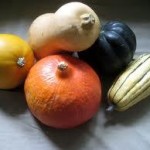 Winter Squash
Winter Squash
Appearance: Range in size, shape, and color depending on variety. All have a hard outer skin giving them a long shelf life.
Taste: Taste can be sweet, similar to pumpkin.
Nutrition: Rich in Vitamins A & C, potassium, and dietary fiber.
Uses: Sliced raw (try this with Butternut), sliced in chunks and added to soups, stews, roasted in the oven.
Storage: Store at room temperature, preferably 50-60 degrees. Some varieties store for months – ‘Butternut’
Season: Late Summer, fall.
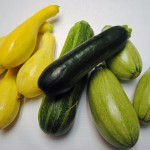 Zucchini (Summer Squash)
Zucchini (Summer Squash)
Appearance: Deep green to green/white or golden yellow skin with creamy white flesh. Size can range from baby to full size.
Taste: Mild tasting vegetable that goes with about anything.
Nutrition: Rich in manganese and Vitamin C
Uses: Sliced raw, grated over a salad or added to cole slaw, grilled, roasted, stuffed, stir fried, soups
Storage: Store slightly moist in bag in refrigerator.
Season: Summer, fall.
SEEDS
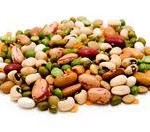 Dried Beans
Dried Beans
Appearance: many colors and sizes depending on the bean variety; Tantre Farm has grown over 13 different varieties (mostly heirloom)
Taste: Flavors vary, but generally nutty flavor & creamy texture
Nutrition: High in protein and fiber along with many, other nutritional qualities specific to each variety of bean
Uses: Good in soups, stews, refried beans, hummus, and casseroles, etc.
Storage: Store dried beans in pods or shell them and store in glass jars for a long time
Season: Fall
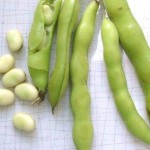 Fava Beans (also called Faba Bean, Horse Bean, or Broad Bean)
Fava Beans (also called Faba Bean, Horse Bean, or Broad Bean)
Appearance: The pod is inedible and looks like a large, flattened, light green bean pod; the bean seed resembles a very large lima bean
Taste: buttery texture, slight bitterness sometimes, but nutty flavor
Nutrition: High in protein and fiber; good source of vitamin B1 or thiamin, iron, copper, phosphorus, potassium, and magnesium.
Uses: Fresh fava beans should be shelled from pod, and bean can be eaten raw, skin and all, if young enough.
Stew skinned beans in a little butter, oil or cream seasoned with savory, thyme or sage. Sauté with other vegetables and toss with pasta. Good in soups.
Storage: Store fresh, unshelled beans in the refrigerator up to a week; once shelled, blanched and skinned, favas can be frozen in plastic containers for longer storage; shelled beans are best used within a few days. Season: Summer
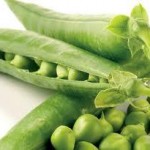 Shelling Peas
Shelling Peas
Appearance: Small, green, round seeds within the green pod
Taste: Sweet, juicy, ‘pea’ flavor
Nutrition: Rich in Vitamins A, C, dietary fiber, and protein.
Uses: Add shelled peas to soups, stews, sautés, stir-fries, or salads. Blanch or steam for 2-4 minutes only until color is bright green.
Storage: Refrigerate in plastic bag for 4-5 days. If kept too long, their sweet flavor and crisp texture diminishes
Season: Early summer
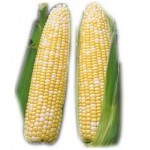 Sweet Corn
Sweet Corn
Appearance: Yellow, white, or bi-color kernels on a cob covered with tightly wrapped, green leaves
Taste: Sweet, “corn” flavor
Nutrition: Significant amount of vitamin A, B-complex, phosphorous and potassium along with vegetable protein. Cooked sweet corn releases increased levels of ferulic acid, which provides health benefits, such as battling cancer, and also retains antioxidants, which reduces the chance of heart disease and cancer.
Uses: Steamed, boiled, roasted, or grilled.
Storage: Stores poorly, so best eaten fresh, since its sugars turn to starches when refrigerated. If needed, refrigerate with husks on, and use as soon as possible to retain sweetness and flavor. Corn is better stored cooked, canned, or frozen.
Season: Summer
